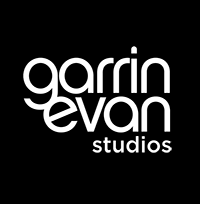
David Ogilvy, the masterful marketing genius, once said: “Advertising reflects the mores of society, but does not influence them.” Ogilvy’s assumption – that advertising has little to no effect on culture – might be true for most run-of-the-mill advertisements.
Yet, throughout history and in particular over the last four decades, a handful of advertising campaigns have transcended Ogilvy’s presumption. In fact, great advertising photography does more than just tell a branded story or sell a product. Truly great advertising photographs push boundaries. They force us to think differently about issues and ideas, and, occasionally, great advertising photographers can use their work to spark cultural conversations, bringing issues to the forefront of society.
Commercial advertising photographers, for instance, have helped guide the cultural conversation on race, sex, gender and politics for decades. Advertising helped draw attention to the AIDS crisis in the early 1990s; it has helped to shape our attitudes of beauty, and it continues to push the boundaries of what’s successful.
True, you can make a case that copywriting is integral to every advertising campaign. Yet, it’s the imagery that reinforces that message and draws viewers in. If you look at some of the most iconic ads in history – like the timeless Uncle Sam “I Want You” ads, for example – the ad is driven by a bold, compelling image.
So which advertisements have had the most lasting cultural impact? These seven advertising photographs transcended culture, earned praise (and condemnation), and continue to influence today’s advertising photographers.
Bruce Weber for Calvin Klein (1982)
Until the early 1980s, men’s fashion photography differed greatly from the advertising campaigns we see today. Most ads featured men in traditional roles wearing suits. Yet, Bruce Weber changed the genre forever in 1982. To mark the launch of Calvin Klein’s new men’s underwear line, Weber created images of chiseled Brazilian Olympian Tom Hintnaus clad in only briefs. (Over the years, Calvin Klein has continued to replicate Weber’s style to market its men’s clothing.)
When the advertisement went live, plastered on massive billboards in Times Square, people couldn’t help but stare. No one had ever seen anything like it. Why it mattered? Weber’s ad was one of the first examples of advertising photography that used male sexuality to sell clothing and it revolutionized marketing.
Therese Frare for United Colours of Benetton (1991)
United Colours of Benetton, an Italian clothing line, has continually pushed the envelope with its advertising. Beginning in the 1980s, Benetton’s legendary creative director Oliviero Toscani launched a campaign using images of diversity and societal imagery to symbolize acceptance and the fight for equality and human rights. One photograph used in 1991, “Pieta” a photograph by Therese Frare, depicted an AIDS patient succumbing to the disease. The image won international advertising and media awards, and helped to increase awareness of the AIDS crisis and (by proxy) the retailer’s brand.
Peter Lindbergh for Donna Karan (1992)
In the early 1990s, the women’s empowerment movement was experiencing new energy and interest from Generation Xers. Lindbergh’s photos from the clothing retailer’s “In Women We Trust” campaign played heavily on this sentiment. The 8-photograph series features a woman on the campaign trail, being sworn into office and sitting behind the desk in the Oval Office. Today, the series would be considered tame, even cliché, but at the time, Lindbergh’s work challenged societal perceptions of women in positions of power.
Doyle Dane & Bernbach for Volkswagen (1960)
The famed advertising agency Doyle Dane & Bernbach developed the legendary “Think Small” campaign in the early 1960s. The idea: Encourage post-WWII Americans to consider smaller German automobiles. The images from the campaigns are striking: An all-black VW bug positioned far away from the camera against a white background. The images perfectly reinforced the campaign slogan, but they also showcased the VW’s product for maximum effect. Many of today’s minimalist advertisements – like those from Apple – were clearly influenced by this VW campaign.
Think Different from Apple (1997)
In 1997, Microsoft was using the campaign “Think” to market their products. Apple’s “Think Different” slogan effectively countered, positioning Apple as an alternative to the PC. The campaign used a number of images, but the most impactful are portraits of the world’s famous thinkers, including Ansel Adams, Albert Einstein and Pablo Picasso. Most of the black-and-white portraits were previously published, but each one is striking. The ads effectively reinforced the brand’s positioning statement, and helped Apple recapture attention.
Inez & Vinoodh for Diesel (2014)
Diesel’s “We Are Connected” campaign from 2014 utilized non-traditional models to help reinforce its message of acceptance. One photo, in particular, featured Jillian Mercado, a fashion editor with muscular dystrophy alongside model James Astronaut. The photo instantly draws viewers in and it made a splash in the industry.
Rankin for Dove (2005)
Dove’s “Real Beauty” campaign continues to run to this day, but it has been in the works for nearly a decade. Throughout the campaign’s history, Dove has introduced a number of unique and compelling images that have gone viral. Their “Real Beauty Sketches” video, for example, has been viewed online more than 65 million times. Yet, the campaign launched in 2005 with a series of photographs of real women taken by famed advertising photographer Rankin. Rankin’s images feature natural portraits of everyday women, which haven’t been altered or touched up. The campaign launch was highly successful, drawing positive feedback from across the industry.
Advertising photography must first and foremost tell a story about a brand and its products. Yet, the most effective photographs do more than that. They make statements; they challenge us, and they start a conversation.
Garrin Evan is an Atlanta advertising photographer. He works with companies, agencies and clients to develop compelling marketing imagery.
